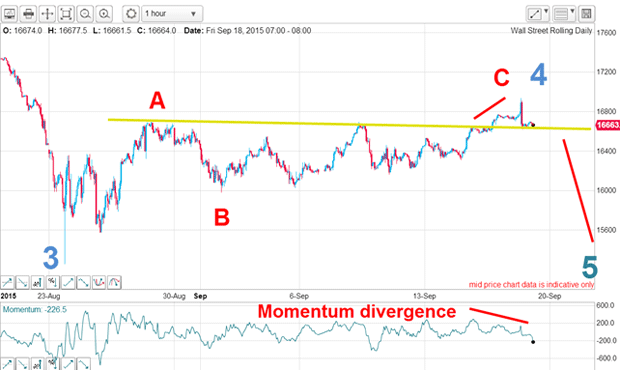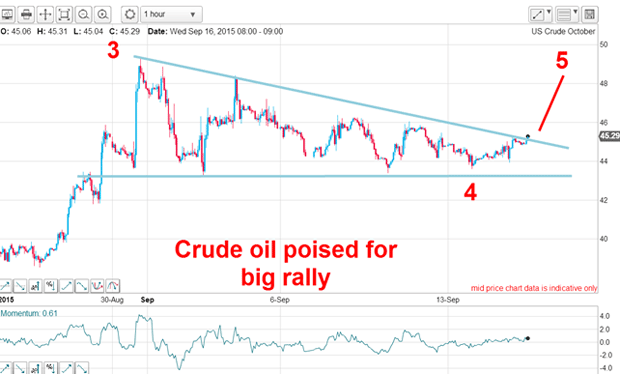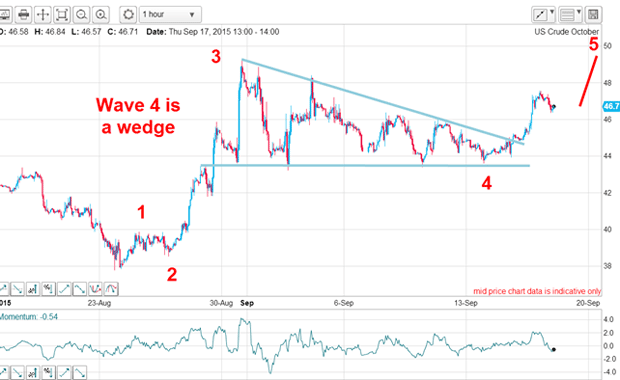The Fed has made me even more certain about the Dow
If the Fed announcement taught us anything, says John C Burford, it's that stockmarkets aren't allowed to fail.
The Oracle spoke and my Wednesday prediction came true. The Fed won't raise interest rates until the data allow. In other words, a decision has been put off using the usual fuzzy language. Remember, the Fed committee is comprised of economists and you will never find a one-handed one ("On one hand")
But what was interesting to me was the excuse given that "heightened uncertainties abroad" (translation: the collapse in Chinese share prices) had been a major factor. If this is not the most blatant admission that the Fed's job is primarily to keep the stockmarket bubbles inflated, I don't know what is.
So there we have it. The original rationale for the formation of the Federal Reserve Bank was to keep the value of the dollar intact, not to prevent recessions. Now it is to force inflation up to 2%, to keep unemployment low, and to keep stock prices rising with quantitative easing and zero interest rate policies (Zirp). I guess two hits out of three ain't bad. But they have strayed a very long way in 20 to 30 years.
Subscribe to MoneyWeek
Subscribe to MoneyWeek today and get your first six magazine issues absolutely FREE

Sign up to Money Morning
Don't miss the latest investment and personal finances news, market analysis, plus money-saving tips with our free twice-daily newsletter
Don't miss the latest investment and personal finances news, market analysis, plus money-saving tips with our free twice-daily newsletter
So how did stockmarkets react? This week's rally has firmed up my interpretation of the Elliott waves. Below is the Dow hourly chart showing the action from the wave 3 spike low on 24 August 24.
Previously, I was unsure where my C wave would terminate, but yesterday's spike high to the 16,940 level was all the evidence I needed to state that in all likelihood, the Wave C of 4 (blue) was now in, and wave 5 down could start.
In addition, the spike high yesterday occurred with a large negative-momentum divergence, which added to the evidence.

Last week, the market burst above my green line of resistance, which is now support. So to verify I have the odds for the above analysis well on my side, I need to see a move back below this line. That should occur fairly soon if we are truly at the start of wave 5.
The headlines said crude was doomed and that was great news for me

Below this is the chart as of yesterday. As I forecast, there was a host of buy stops that were triggered as the market moved up past the highs.

That is typical market action whenever the speculators are lined up mostly on one side of the market in this case, the short side. Sentiment has been extremely bearish with hedge funds and small speculators heavily net short.
In fact, as I mentioned before, Goldman Sachs has a $20 target. Using my 'headline indicator', I was confident that the market was indeed ready to rally.
Whenever you see a lop-sided market such as this, all it takes to set off the firecracker is a move towards the obvious stop-loss levels. These are readily made apparent by a glance at your chart. And this can produce a very rapid short-term profit for those traders that understand where the path of least resistance lies.
You do not need to take a view on where oil prices 'should' be (in fact, having a firm view can easily detract from making great trades). Be an interested observer and make rational judgements based on what the market is telling you and never fight the market: it is always right.
Get the latest financial news, insights and expert analysis from our award-winning MoneyWeek team, to help you understand what really matters when it comes to your finances.
John is is a British-born lapsed PhD physicist, who previously worked for Nasa on the Mars exploration team. He is a former commodity trading advisor with the US Commodities Futures Trading Commission, and worked in a boutique futures house in California in the 1980s.
He was a partner in one of the first futures newsletter advisory services, based in Washington DC, specialising in pork bellies and currencies. John is primarily a chart-reading trader, having cut his trading teeth in the days before PCs.
As well as his work in the financial world, he has launched, run and sold several 'real' businesses producing 'real' products.
-
 Six investment funds for beginners
Six investment funds for beginnersBeginner investors can use funds to start building their portfolio, making it easy to access global trends while managing their risk level. Here’s six funds that beginner investors can consider.
-
 Farming isn't for the faint-hearted – and isn't profitable
Farming isn't for the faint-hearted – and isn't profitableOpinion Farming may look appealing, but turning a profit is extremely hard. No wonder many farmers are attracted to the Sustainable Farming Incentive, says Max King